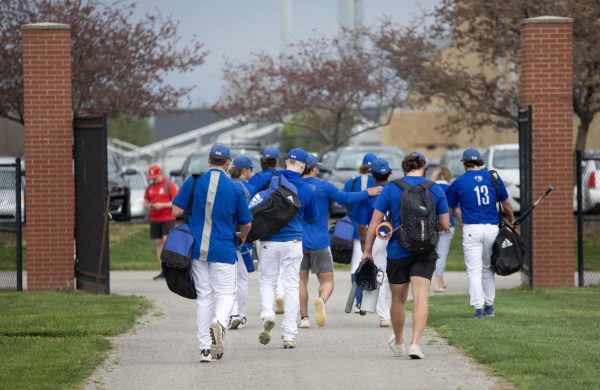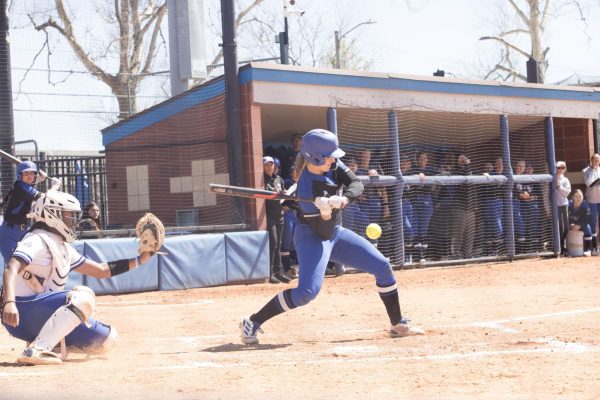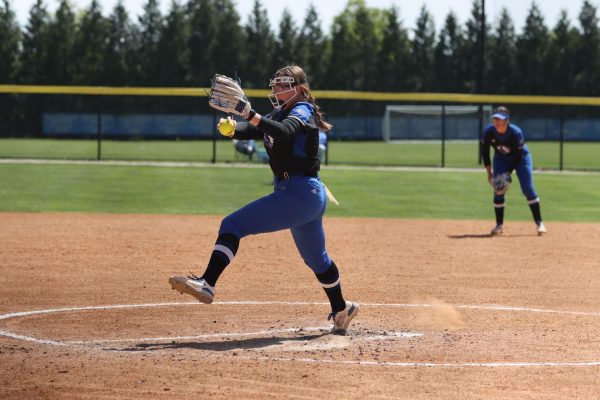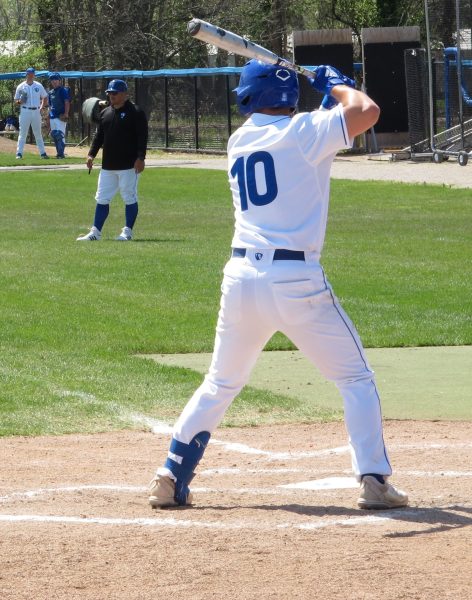Wrestling: Measuring up
In 1997 three collegiate wrestlers (one from North Carolina, one from Wisconsin and one from Michigan) trying to cut weight for a meet all died because of rapid weight loss regiments. Each of these wrestlers was trying to sweat off water weight to wrestle.
What followed the three young men’s deaths was a flurry of new NCAA regulations that cracked down on rapid, drastic weight cutting and helped to ensure the safety of wrestlers.
“If someone would have told me fifteen years ago that I would be doing all these calculations (for NCAA regulations), I wouldn’t have believed it,” Eastern Head Coach Ralph McCausland said.
McCausland, who has coached at Eastern for 22 years, has seen wrestling move from its “grassroots,” as he called it, into a new era where NCAA regulations help prohibit radical weight loss.
Now McCausland has to make sure his wrestlers not only make weight but also follow the regulations provided.
The first step for these wrestlers, before they even step on a scale, is to take a specific gravity test. The test uses a urine sample to measure the level of hydration in the body. The lower the number in the results, the higher the level of hydration. For a wrestler to pass, he must have a reading of .02 or less to go onto the next step. In comparison, when taking a drug test, results must be under .03 to pass.
“The hardest part of the weight certification process is trying to keep enough fluid in you to pass the test,” Eastern sophomore wrestler Jason Sherko said. “You may feel hydrated, but it won’t be enough.”
The next step is to immediately weigh them and have a skin fold test to measure percent body fat, McCausland said. The test will give them the wrestler’s minimum wrestling weight, the lowest weight class a wrestler can compete, the lowest wrestling weight and the lowest weight the wrestler can reach without going under 5 percent body fat. Whichever of these weights is greater is the wrestler’s lowest weight class to compete. When wrestlers weigh in for the first time that season, that is when they certify for their given weight class. This is where one of the negative things about the regulations comes into play.
Once a wrestler certifies at a weight class, he must make that weight in weigh-ins for the rest of the season to maintain certification.
For example, if the 149-pound weight class was open and there are two wrestlers at 141 pounds. If the second string wrestler wants to move up a weight class to fill the open spot for a meet, he still has to make 141 pounds to maintain certification, even though he is wrestling 149 pounds.
Another change the NCAA made in wrestling to ensure wrestlers’ safety was to set the weigh-in period one hour before the meet so wrestlers would have less incentive for rapid weight loss.
McCausland said that he has never had trouble with any wrestlers cutting weight since many of them don’t know how to do it.
“Kids (trying to lose weight) look at an apple and a bag of Doritos and eat the Doritos because they weigh less (instead of eating healthy),” McCausland said.
Wrestling at the high school level has adopted similar regulations to ensure the safety of their athletes.
Despite all these regulations, there still are long-term dangers to cutting weight, said James Painter, department chair of the family and consumer sciences. Cutting extra calories to make weight isn’t unhealthy, Painter said, but it can lead to lifelong habits.
“Wrestlers have a tendency to get into eating disorders,” Painter said. “Even after they’ve quit wrestling, it’s a pattern they can’t get out of.”
Wrestling Weight Classes
-125 pounds
-133 pounds
-141 pounds
-149 pounds
-157 pounds
-165 pounds
-174 pounds
-184 pounds
-197 pounds
-285 pounds












































